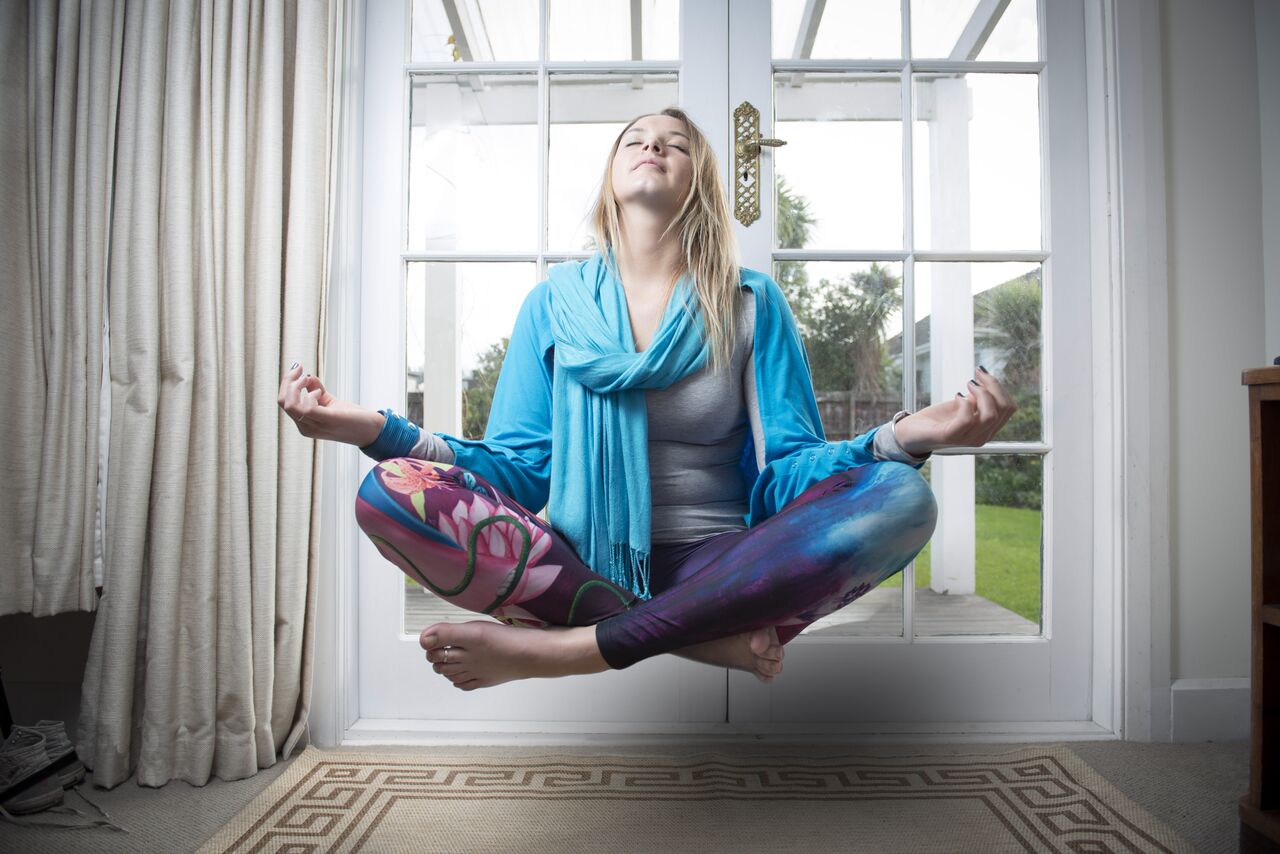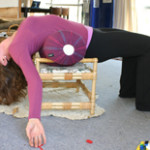
When you give your body, mind, and soul the gift of yoga, you enhance your spiritual growth. Photo by Courage My Love
by Meera Watts, Siddhi Yoga
Yoga has become a mainstream activity in all parts of the world. The discipline has a lot to teach us but we are failing the practice itself. It’s great that we’ve all been introduced to this phenomenal multi-faceted means of helping ourselves, but to take it apart and use what we’re comfortable with isn’t exactly the point of yoga.
One can master poses and look the part but when yoga doesn’t capture your soul, teach you how to be still, or alter how you live your life, it’s only a half-hearted practice.
Spirituality is an important part of yoga. The eight limbs of yoga are what can take you to that transcendent place you’ve heard about. It’s probably what made you consider yoga in the first place. All the promises of a better state of being do exist but you have to commit to all aspects of it for full benefits.
The Eight Limbs of Yoga (Ashtanga)
If you were to take yoga teacher training, you would learn about the yogic philosophy and the important aspects that surround it. ‘Ashtanga’ means eight limbs. It represents eight steps one must take to live a meaningful, purposeful life. Self-discipline is necessary to maintain the moral and ethical code. It is for your own health and also helps you see your own spiritual aspects.
1. Yama
The first limb deals with your ethical standards and integrity. As you focus on your behaviour and how you go through life. It’s based on what we know as the Golden Rule, do onto others.
There are 5 Yamas:
- Ahimsa: Nonviolence
- Satya: Being honest
- Asteya: Not stealing from others
- Brahmacharya: Maintaining self-control
- Aparigraha: Not coveting things or people
2. Niyama
Niyama refers to your self-discipline and spiritual observations. Do you pray to the one who listens? Do you attend church, give thanks for your food or have your own personal practice? Regular meditation practices or contemplative walks in nature are the ways of practising niyama.
- Saucha: Cleanliness
- Samtosa: Being content
- Tapas: Spiritual austerities
- Svadhyaya: Studying scriptures or studying your inner self.
- Isvara pranidhana: Surrendering to God
3. Asanas (Yoga Poses)
The asanas are the part of the path where you practice yoga poses. The yoga philosophy is that your body is a temple of the spirit. It’s not just about how long you can stay in a headstand or how deep you can stretch into your backbend. The poses have their merit in tapping into your deeper self if you’re willing to open up to the possibility.
When you give your body, mind, and soul the gift of yoga, you enhance your spiritual growth. The asanas will help you develop discipline and concentration. This is important for meditation.
4. Pranayama (Breath Control)
Gaining mastery over your respiratory process is the fourth stage in Ashtanga. What you’ll notice is the effect breath control has over your body. A deep breath is something automatic we do when we need to relax. It’s not just about the breathing, however. It’s noticing this connection the breath has to your mind and emotions. Pranayama translates to life force extension and yogis from ancient times believe that this life force can extend your life.
Pranayama can be your primary focus as you sit and meditate or you can make your hatha routine more intense by focusing on your breathing.
The first four stages refine your personality and help you master your own body. You should develop an awareness of yourself that will prepare you for the other four stages of Ashtanga. This is where yoga, breathing, and doing good acts will help you deal with the mind, and achieve a higher state.
One might say that this is where the magic happens, though many people will do half of the four above stages. These people might wonder why they’re still agitated with life and not feeling open-hearted. You must walk the whole path to the end to get those feelings you wish to achieve. To find that part of yourself that doesn’t cling onto things or run from things.
5. Pratyahara
Pratyahara is where we begin to make steps towards drawing awareness inwards as opposed to focusing on the outside world. We learn how to detach from our senses and the monkey mind, which can be done only by looking into yourself. You have the opportunity to take a good look at yourself and observe what you crave, what your habits and how they may be harming aspects of yourself. Say you smoke, you may feel that pain in your chest and realize it doesn’t coincide with the spiritual journey you committed to.
6. Dharana (Concentration)
Each stage of Ashtanga feeds off the stage before it and dharana is created by what you set up in the pratyahara stage. Once you’ve looked inside yourself and gotten rid of outside distractions, you can really begin with the internal distractions. Concentration will take practice but it is what slows you down and gets you ready for true transformation.
You concentrate on slowing down your thought processes. This is done by concentrating on one thing. This could be a specific energetic centre, a deity, or the repetition of a sound. It could be your own chanting or you seeing the Buddha as right in front of you. You’ve been building up your concentration through postures, breath control and withdrawing your senses from the outside world.
Although we may shift attention in our yoga asanas and yogic pranayama breathing, our attention travels. Our focus shifts because we are busy tuning nuances of postures or breathing techniques. With pratyahara, you just observe yourself. This type of concentration will lead into a meditation practice in a natural way.
7. Dhyana (Meditation & Concentration)
Dhyana is the act of meditating or contemplating one’s existence. It is an uninterrupted flow of concentration and energy. While dharana and dhyana may seem the same, there is a difference. Dharana focuses on one thing and meditation is a state of awareness without a particular focus.
The mind is quiet and there are very few thoughts in the stillness you have created. It’s a state of no-mind. Achieving this stillness is no easy task but if you continue to care enough, this state of awareness will eventually open up for you. Yoga is a process which we will benefit from during every stage.
8. Samadhi (State of ecstasy)
When you reach the final stage of Ashtanga, you will merge your focus and transcend your ‘self’. You will feel the connection to the source, the divine and feel a connection with all living things. These realizations will give you feelings of bliss and a feeling of fulfilment as you are at one with the world.
This probably sounds like an impossible goal that you wouldn’t associate with your yoga practice. All of these limbs of yoga do work off one another. When you commit to it fully, you will understand life’s true purpose. Feelings of joy, abundance, and inner fulfilment along with the freedom to find out who you are without the mind trying to interfere.
This is what yoga does when you honour all aspects of it.
About Meera:

Meera Watts is a yoga teacher, entrepreneur and mom. Her writing on yoga and holistic health has appeared in Elephant Journal, CureJoy, FunTimesGuide, OMtimes and others. She’s also the founder and owner of Siddhi Yoga International, a yoga teacher training school based in Singapore. Siddhi Yoga runs intensive, residential trainings in India (Rishikesh, Goa and Dharamshala) and Indonesia (Bali).
Website: https://www.siddhiyoga.com/
Youtube: https://www.youtube.com/user/siddhiyogaacademy
Instagram: https://instagram.com/siddhiyogainternational
FB Page: https://www.facebook.com/siddhiyogateachertraining


Hi, thanks for inspiration. I like this part … It’s a state of no-mind 🙂
Really yoga is very important nowdays. i like your blog.